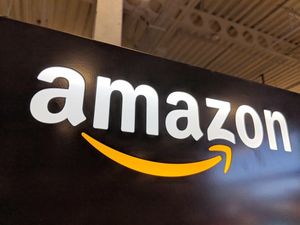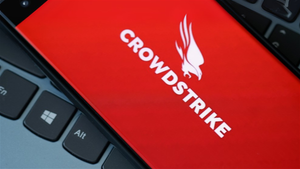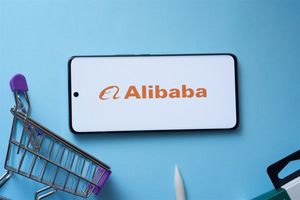Shenzhen, China - DTFU Logistics today released a practical, plain‑English guide to help importers navigate Shipping from China to USA in 2025, from picking the right mode to understanding ports, costs, and timelines. If you’re weighing air vs. ocean, hunting for door‑to‑door options, or simply trying to forecast your landed cost, this release breaks it down without jargon—and with steps you can act on.

Why this guide now
Global trade remains resilient, but capacity, surcharges, and regulatory changes can still surprise even experienced importers. Whether you’re a first‑time buyer or scaling your supply chain, clarity saves money. Our goal is straightforward: show how Sea shipping from China to USA, Air shipping from China to USA, and Door to door shipping from China to USA compare, when to use each, what ports matter, and how to estimate both Shipping cost from China to USA and Shipping transit time from China to USA with confidence.
“I speak with importers every day who just want a reliable timeline and a clean cost breakdown,” said Ivan Chan, Senior Logistics Analyst at DTFU Logistics. “This guide puts numbers, steps, and choices in one place so you can plan inventory and cash flow with fewer surprises.”
The three primary approaches
-
Sea shipping from China to USA: Best for medium to high volumes, heavy cargo, and cost control. Options include FCL (full container load, typically 20’ or 40’) and LCL (less‑than‑container load) for smaller consignments. Ocean is slower but offers the lowest cost per unit.
-
Air shipping from China to USA: Ideal for urgent orders, high‑value items, product launches, or volatile demand. You’ll pay a premium, but lead time compresses from weeks to days with predictable uplift schedules.
-
Door to door shipping from China to USA: A convenience‑focused service that bundles pickup, international carriage, customs clearance, and final delivery under one provider. This can be ocean‑based, air‑based, or express‑courier based depending on your timeline and budget.
Main port in China and USA
Understanding origin and destination hubs helps you pick routings that balance time and cost. The Main port in China and USA most importers use also influences rates and sailing frequency.
-
China origin hubs commonly include: Shanghai, Ningbo‑Zhoushan, Shenzhen (Yantian/Shekou), Guangzhou (Nansha), Xiamen, Qingdao, Tianjin, and others. Choice depends on factory location, feeder connectivity, and sailing frequency.
-
USA destination hubs typically include: Los Angeles/Long Beach and Oakland on the West Coast; Seattle/Tacoma in the Pacific Northwest; and New York/New Jersey, Savannah, Houston, and others across the East and Gulf Coasts. Your inland delivery point will determine whether West Coast discharge plus rail is better than sailing direct to the East Coast.
Shipping transit time from China to USA
Timelines vary by lane, carrier, and season. Use these indicative ranges for planning your Shipping transit time from China to USA:
-
Ocean, port‑to‑port: roughly 12–18 days to the US West Coast; 28–40 days to the US East Coast (via Panama), depending on service speed and transshipment.
-
Ocean, door‑to‑door: allow 30–45 days to West Coast destinations and 35–60 days to East Coast destinations, factoring origin handling, customs clearance, and last‑mile.
-
Air, terminal‑to‑terminal: about 1–5 days depending on direct vs. indirect uplift, day‑of‑week, and capacity.
-
Air, door‑to‑door: commonly 5–10 days end‑to‑end if paperwork is clean and customs is pre‑filed.
Remember that peak seasons (pre‑Lunar New Year, back‑to‑school, and Q4 holidays) can stretch lead times. Buffering one extra week on ocean schedules and two extra days on air is a practical rule of thumb.
Shipping cost from China to USA: how to think about price
Rates move with fuel, capacity, seasonality, and demand. Still, you can make solid early estimates of Shipping cost from China to USA:
-
Ocean FCL: Budget ranges often fall around a few thousand USD per 20’ and somewhat higher for a 40’, with premiums for priority services and surcharges (e.g., peak season, equipment imbalance) during tight markets.
-
Ocean LCL: Priced per charged volume (CBM) with minimums; remember to include origin/destination handling, documentation, and customs fees.
-
Air freight: Quoted per chargeable weight (actual vs. volumetric). General cargo can span a wide range depending on the lane and season, with surcharges for oversized or dangerous goods.
-
Door‑to‑door and DDP: The all‑in nature simplifies planning; expect a premium for convenience and inclusions (duties/taxes, last‑mile), but you gain predictability in cash flow.
To create apples‑to‑apples comparisons, always clarify:
-
what’s included (pickup, export clearance, destination handling, delivery),
-
who files customs and pays duties/taxes,
-
whether there are volume/weight minimums, and
-
how long the quote is valid.
When to choose ocean vs. air
-
Choose ocean when your product is time‑flexible, bulky, or heavy and your priority is landed cost per unit. Consider FCL once you’re near half a container’s worth of volume—the predictability and unit economics usually beat LCL.
-
Choose air when your margin can support speed, your purchase order is critical for a launch or promotion, or you’re topping up inventory between ocean cycles.
-
Blend both when you need a safety stock: move base demand by ocean and use air for spikes or exceptions.
A clear look at Door to door shipping from China to USA
Door to door shipping from China to USA reduces coordination. One provider handles pickup from your supplier, export documentation, international leg, customs clearance, and final mile. You’ll see this offered in two common flavors:
-
Ocean D2D/DDU/DDP: Best for stable, forecastable flows where all‑in cost matters. Expect the widest range of lead times based on lane and customs complexity.
-
Air D2D/DDU/DDP: Best for launches or replenishments where you need end‑to‑end time compression and simpler vendor management.
If you choose DDP, confirm what taxes, duties, and fees are included, and how the broker determines customs value (transaction value, assists, freight allocation, etc.). Proper HS classification and paperwork will prevent delays and re‑quotes.
Documentation and customs essentials
-
Commercial invoice: Include seller and buyer details, currency, Incoterms, full product descriptions, and HS codes.
-
Packing list: Line‑item quantities, net/gross weights, and dimensions.
-
Certificates and permits: Confirm if your commodity requires special permits, testing, or certifications.
-
Power of Attorney (POA) with your customs broker: Needed for US customs filing.
-
Consistency matters: Invoice, packing list, and booking data must agree to avoid holds.
Incoterms and risk
Incoterms define who pays and who bears risk at each stage:
-
EXW/FCA: Buyer takes control early; more responsibility on the importer to arrange pickup and export.
-
FOB: A common middle ground—seller handles origin export formalities and places goods onboard; buyer manages the main carriage and beyond.
-
CIF/CFR: Seller arranges main carriage; buyer still manages destination import and delivery.
-
DAP/DDP: Seller (or your logistics partner) handles delivery to your door; in DDP, duties/taxes are included in the seller’s responsibility.
Pick Incoterms that match your operating capacity and appetite for control. Many growing importers migrate from EXW/FOB to DAP/DDP as they scale and prioritize simplicity.
Packaging, insurance, and risk management
-
Packaging: Ocean requires robust, stackable cartons and pallets; moisture protection and clear labeling reduce claims and mis‑sorts. Air favors lighter materials to control volumetric weight.
-
Insurance: Cargo insurance is inexpensive relative to potential loss. Protect against general average, handling damage, and theft.
-
Security: Seal containers, use tamper‑evident tape, and verify chain‑of‑custody for high‑value shipments.
Practical timelines to plan by
-
Sampling/new product: Air for speed; Ocean once demand stabilizes.
-
Steady replenishment: Ocean FCL on a monthly or biweekly cadence; top‑up by air during demand spikes.
-
Promotions/launches: Blend—pre‑position baseline inventory by ocean; hedge final demand by air.
Common pitfalls—and how to avoid them
-
Underestimating lead time: Always add buffer during peak seasons and before major holidays in both origin and destination markets.
-
Incomplete paperwork: Mismatched invoice/packing list data can trigger customs holds and storage fees.
-
Ignoring chargeable weight: For air, dimensional weight can exceed actual weight—optimize packaging.
-
Not normalizing quotes: Compare like‑for‑like inclusions to avoid surprise accessorials later.
-
Choosing the wrong port pair: Inland rail/truck costs can outweigh a seemingly cheaper ocean rate; model the full journey.
Step‑by‑step: booking your next shipment
-
Confirm commodity HS codes and regulatory requirements.
-
Choose Incoterms aligned to your operational bandwidth.
-
Pick mode: Sea shipping from China to USA for cost‑efficiency at volume; Air shipping from China to USA when time is tight; Door to door shipping from China to USA when you want a single accountable partner.
-
Gather documents: Commercial invoice, packing list, permits, and POA for customs.
-
Request quotes with identical data: origin/destination, dimensions/weights, cargo ready date, Incoterms, and delivery requirements.
-
Validate lead times and cut‑offs (CY cutoff for ocean, cargo close‑out for air).
-
Book, track milestones, and pre‑file customs to avoid holds.
-
On arrival, confirm duty/tax assessment, schedule delivery, and reconcile freight invoices against quote inclusions.
How DTFU Logistics helps
DTFU Logistics supports end‑to‑end Shipping from China to USA with flexible choices: ocean FCL/LCL, deferred and priority air, and door‑to‑door—including DDP options for eligible commodities. Our network spans major China origins (Shanghai, Ningbo, Shenzhen/Yantian, Guangzhou/Nansha, Xiamen, Qingdao, Tianjin) and US gateways (Los Angeles/Long Beach, Oakland, Seattle/Tacoma, New York/New Jersey, Savannah, Houston). We combine transparent pricing with proactive milestone updates, so you know where your freight is and what it costs—before it arrives.
If you need a partner who can align lead times with your inventory plan, optimize between air and ocean, or set up repeatable door‑to‑door moves, talk to us. A dedicated account team can benchmark options, model landed cost, and implement a routing guide that fits your demand profile.
FAQs: Shipping from China to USA
-
What’s the fastest option for small but urgent cargo? — Air shipping from China to USA with priority uplift, often 3–5 days terminal‑to‑terminal.
-
What if I don’t have enough volume for a full container? — Use LCL ocean or consider air if timing is critical; compare landed cost and lead time.
-
How do I reduce unexpected fees? — Normalize quotes, pre‑file customs, and confirm port/rail/truck combinations before booking.
-
Can I get one fixed price to my warehouse? — Yes. Door to door shipping from China to USA (including DDP for eligible goods) can bundle transportation, brokerage, and delivery.
Looking for a straightforward, expert‑led start to your next import? DTFU Logistics offers a free routing and cost assessment for qualified shipments. Visit https://www.dtfulogistics.com/ to request a tailored plan.
Media Contact
Company Name: DTFU Logistics
Contact Person: Young
Email: Send Email
Phone: +8618926598524
Address:East Shennan East Rd
City: Shenzhen
State: Guangdong
Country: China
Website: https://www.dtfulogistics.com/








